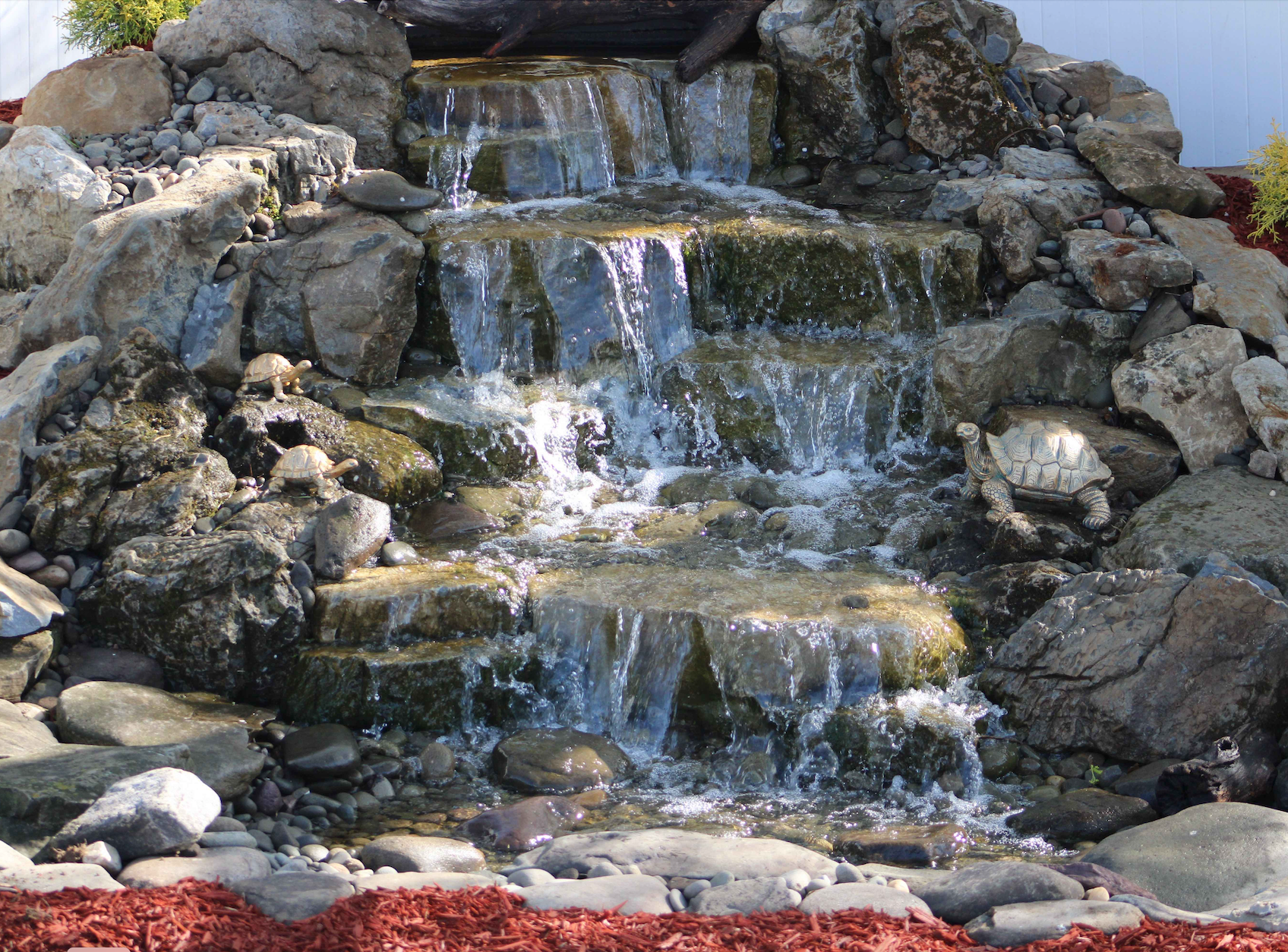Water features add beauty, tranquility, and a touch of nature to any outdoor space. When it comes to choosing between a pondless water feature and a traditional pond, there are several factors to consider. In this blog post, we'll delve into the pros and cons of both options, including safety, sanitation, maintenance, and more, to help you make an informed decision for your landscape.
1. Pondless Water Feature:
Pros:
- Safety: Pondless water features are safer, especially for households with young children or pets, as there is no standing water to pose a drowning risk.
- Low Maintenance: With no standing water, pondless features require less maintenance than traditional ponds, as there is no need for algae control, fish care, or water quality management.
- Space-Saving: Pondless features are ideal for smaller yards or urban environments where space is limited, as they can be designed to fit into compact areas without sacrificing aesthetics.
Cons:
- Limited Wildlife: Pondless features may not attract as much wildlife as traditional ponds, as there is no habitat for fish, frogs, or other aquatic creatures.
- Sound Variation: While pondless features still offer the soothing sound of running water, the absence of a pond may result in a slightly different sound profile compared to a traditional pond with fish and plants.
2. Traditional Pond:
Pros:
- Biodiversity: Traditional ponds support a greater variety of wildlife, including fish, frogs, birds, and beneficial insects, creating a more dynamic and biodiverse ecosystem.
- Aesthetic Appeal: Ponds add visual interest and natural beauty to outdoor spaces, serving as focal points for landscaping and providing opportunities for aquatic plants and water-loving flora.
- Educational Value: Ponds offer educational opportunities for learning about aquatic ecosystems, biology, and ecology, making them valuable teaching tools for schools and nature enthusiasts.
Cons:
- Safety Concerns: Traditional ponds pose safety risks, especially for young children or pets, who may accidentally fall into the water and require supervision or safety measures such as fences or covers.
- Maintenance Requirements: Ponds require regular maintenance to maintain water quality, control algae, and care for fish and plants, including filtration, aeration, and occasional cleaning.
Conclusion: When it comes to choosing between a pondless water feature and a traditional pond, there is no one-size-fits-all solution. Each option has its own set of pros and cons, depending on factors such as space availability, safety concerns, aesthetic preferences, and maintenance requirements. Ultimately, the decision should be based on your individual needs, preferences, and lifestyle.
Call to Action: Ready to add a water feature to your outdoor space? Explore our selection of pondless water features, traditional ponds, and accessories at [Your Website] and start creating your own aquatic oasis today!

